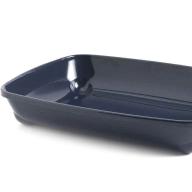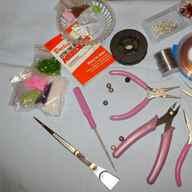Abstract of a lesson on technology in grade 3 "Dragonfly"

Objectives:
- Introduce new technology origami - modular origami;
- Assemble a dragonfly using modular origami technique,
- Introduce the culture of Japan;
- Continue training to work according to the scheme;
- Develop small arm muscles, logical thinking, attention;
- Education of hard work, perseverance, healthy way life.
Equipment: presentation, diagrams, world map, modules.
During the classes
- Organizing time.
Hello guests.
Hello guys.
Today we have guests in the class, welcome them.
Now greet each other.
"Hello Friend". (paired with)
Hello Friend! (handshake)
How are you doing? (slap each other on the shoulder)
Where have you been? (pulling the ear)
I missed! (put hand to heart)
You came! (spread their arms to the sides)
Okay! (hug)
Sit down.
Organization of the workplace.
Let's check your readiness for the lesson. Have you prepared everything.
(43 modules)
- Communication of the topic and objectives of the lesson.
So, guys, we have a labor training lesson and the topic of our lesson "Modular origami" (1 slide)
To better know what it is and get to know this technique, we will now go on a distance journey to the amazing country of Japan.
We will develop hand motor skills, thinking, attention.
And, of course, we will continue to work on fostering hard work, perseverance, and a healthy lifestyle.
- Work on the topic of the lesson.
- Introductory conversation
Look at the political map of the world.
Show our country on the map (show on the map)
Who can show you where Japan is located? (Work on the world map)
So, we sat down comfortably, we go to Japan.
(Music plays softly 3 students tell the story of origami development)
- Feature of technology.
What is the peculiarity of this technique?
Key features of the technique:
Using a fairly simple triangular module that is folded from a rectangular sheet of paper;
Typical way of connecting modules;
A VERY large number of modules.
So, today in the lesson we are working in the modular origami technique.
I think you are a little tired of sitting, so let's take care of our health.
Fizminutka
Well done, sit down.
Guys, you are already familiar with the technique of folding the module and in the last lesson you prepared modules for our product.
Guys, what do you think can be added from these modules?
Now close your eyes and don't open them until I tell you to open them.
Now look at some of the finished models.
(Show of finished models from modules)
We will make the simplest product from our modules.
And guess which one.
Riddle.
Sat on a white dandelion.
Blue airplane.
He warmed his wings with the sun
And flew back.
(Answer: dragonfly) (7 slide)
3. Analysis of the sample.
Working with diagrams.
Scheme No. 1 - assembly of the torso (8 slide)
Look and count how many modules are required to fold the torso? (9)
We add according to the scheme.
Scheme No. 2 - assembly of wings (9 slide)
How many modules are required for the wings? (take 6 modules 4 times.)
Set aside the required number of modules.
We add according to the scheme.
Scheme No. 3 - tail assembly (10 slide)
How many modules do you need to take for the tail? (8)
Set aside the required number of modules.
We add according to the scheme.
Scheme No. 4 - assembling a dragonfly.
What else does the dragonfly need to do? (Mustache) (11 slide)
Here we have such a wonderful dragonfly! (12 slide)
Guys, take a little break from work, give yourself some rest and turn into dragonflies for a minute.
Physical minutes "DRAGONFLY"
That's what a dragonfly
Like pea eyes.
Left - right, back - forward.
Well, just like a helicopter.
4. Exhibition of works.
Guys, tell me where you can use these cute crafts?
5.Assessment.
6.Summarizing.
So guys, what material did we work with in the lesson today?
Where was paper first made?
What technique did we meet today?
Did you like assembling from modules?
But in order to want to create, invent, you need not forget about what? (about health)
How do you improve your health?
Where do you study?
In fact, health is happiness! When a person is healthy, he wishes good for others and wants to please others.
The lesson is over, thank you all for your attention, be healthy! (13 slide)
Application.
"Origins creativity
and the gifts of children at their fingertips.
From the fingers, figuratively speaking, the thinnest
streams that feed the source
creative thought.
In other words: the more skill
in a child's palm, the smarter the child. "
V. A. Sukhomlinsky
Origami (Japanese 折 り 紙, literally: "folded paper") is the ancient art of folding paper figures. The birthplace of origami is Japan. The art of paper folding originated in the Land of the Rising Sun many centuries ago. In ancient times, origami had a religious purpose, it was a temple art. Making colorful figurines was sacred ritual action... They were used to decorate the statue of the "many-sided" and "thousand-handed" goddess of mercy Kannon to appease her and ask for protection.
The Japanese saw a mystical connection between religious rituals and folded paper products. After all, "ori" means "folded", and "kami" means "paper" and "god" at the same time.
Having lost its ritual purpose over time, origami went beyond the temples and reached the imperial palace. The ability to fold from paper was considered by the courtiers as one of the signs of a good education and refined manners. In those days, paper was a rare and expensive material. Origami figurines served as a coat of arms and a seal in some noble families.
Later, mainly women and children began to practice the art of paper folding. It has become a part of traditions and customs, an adornment of Japanese life, carnival processions, folk holidays.
In the second half of the 19th century, origami crossed the borders of Japan. In European countries, they began to get acquainted with the classic figures made using the origami technique.
SCHEME 1, 2,3.

Modular origami for beginners. Dragonfly
Modular origami for beginners. Master Class
Modular origami. Jumping dragonfly
The author of the work is Natalia Afanasyevna Budko, teacher of additional education MBOU DOD DDT Art. Starovelichkovskaya Krasnodar Territory.The master class is intended for children school age and parents. The work can decorate the interior and is a great guide for beginners.
Purpose: creating a composition using modular origami technique.
A task:
- to acquaint with the origami technique;
- to teach the basic techniques of manufacturing;
- to teach to create compositions in this technique.
Basic shape: "Triangle".
A triangle is made from a rectangle of paper, in which the ratio of width to length is 4: 7, so an isosceles triangle of 2.5 x 2 is obtained.
Tools and materials:
- thick paper or wallpaper;
- PVA glue;
- ruler;
- scissors.
Progress:
Jumping dragonfly
Summer sang red;
I didn't have time to look back
As winter rolls into your eyes.
Pure field has died;
There are no longer those bright days
As under each leaf of her
Both the table and the house were ready.
Author: I.A. Krylov
To work, we need to make paper triangles.
1. I suggest you make such a dragonfly.
2. Cut out 75 pieces of rectangles.

3. Bend the rectangle in half.

4. Bend the ends of the strip to the midline.

5. Bend the second strip - by airplane.

6. Bend the left and right corners to the marked line. Bend the corners of the strip up.

7. Bend the part along the center line. The triangle is ready.

8. We make 75 triangles (modules)

9. Tail: 22 triangles are tightly inserted into one another. Bend the first triangle back to form a pointed end of the tail.




10. Torso: 9 triangles fit tightly one into one.

11. The tail and torso are ready.

12. Let's make 2 pairs of wings, consisting of a large and a small wing.
13. Let's make a small wing from 19 modules. Put the next triangle on the middle corners of the two triangles, put on the triangle on its corners. We repeat this sequence 9 times.

14. We make a large wing from 25 triangles.

15. We made 2 wings and we are making 2 more of the same.

16. Let's make a head from 5 triangles. At the middle corners of two triangles.

17. Put on a triangle on its corners.

18. We connect the head with the body.

19. Glue the wings to the body.


20. From strips of paper, roll 2 circles with a diameter of 2 centimeters.

21. Glue the eyes in the head area.

22. The dragonfly is ready.

23. Can be made in any color.

Children's work from modules

You can also fold modules in half a square using the writing blocks available in your stationery.
How to fold a triangular origami module

The resulting module has two corners and two pockets. 

How to connect modules together
The modules folded according to the diagram below can be inserted into each other different ways and receive bulky products. Here is one possible connection example: 
Making many modules out of paper different colors, you can get a modular constructor. A figure folded from such a constructor can be easily disassembled. Many interesting figures can be folded from such parts.

EXAMPLE DRAGONFLY

If you want to get familiar with the modular origami technique but don't have time to fold 500 modules, start with less time consuming models. For these dragonflies, only 43-63 modules are needed. Can be glued volumetric application with dragonflies, make a mobile pendant, make toys for babies or to decorate a Christmas tree.
First option
For a dragonfly with lush wings, you need 63 modules.

Second option
For a more economical option, only 43 modules are needed.

Other options
Experiment with paper color and quality. You can make dragonflies from coated, magazine paper, from colored foil on a paper base.

The resulting dragonflies flap their wings well and are very popular with children. If you intend to use them as a toy, then it is better to use glue (PVA or glue stick) during assembly.

Dragonfly from paper modules. Master Class
We will tell you how to make a dragonfly out of paper modules.
This craft can be made by children over 6 years old. This craft is simple and good for those who are just starting out in the art of origami.
DIY paper dragonfly. Step by step manufacturing
To make a dragonfly, we will use two paper colors: yellow and brown (paper can be ordinary color, office or special for origami). The size of one module in our case is 7.5 by 5 cm. (Modules can be made in a different size and in a different color)
Collect black, green and blue modules according to the diagram.
.jpg)
Let's move on to assembling the dragonfly. For this we need 45 black modules, 90 green and 64 blue.
.jpg)
Step-by-step process for assembling a dragonfly
Let's start with the body of a dragonfly.
1st row: 1 black module.
2nd row: 2 black modules, each of which is put on one corner of the first row.
.jpg)
3rd row: 1 black module.
.jpg)
4th row: 2 black modules, each of them is put on one corner of the previous row and one corner of the 2nd row.
.jpg)
5th row: 3 black modules. The outer modules are put on one corner.
.jpg)
6th row: 2 black modules.
.jpg)
7th row: 3 black modules. The outer modules are put on one corner of the previous row and one corner of the 5th row
.jpg)
8th row: 4 black modules. The outer modules are put on one corner.
.jpg)
9th row: 3 black modules. One free corner remains along the edges.
.jpg)
10th row: 2 black modules. One free corner remains along the edges.
.jpg)
11th row: 1 black module. There is 1 free corner around the edges.
.jpg)
.jpg)
1 black module with the long side facing down.
.jpg)
Let's start assembling the upper wing.
1st row: 1 green module.
.jpg)
3rd row: 1 green module, 1 blue, 1 green. The outer modules are put on one corner.
.jpg)
.jpg)
5th row: 1 green module, 1 blue, 1 green, 1 blue, 1 green. The outer modules are put on one corner.
.jpg)
6th row: 1 blue module, 2 green, 1 blue. One free corner remains along the edges.
.jpg)
7th row: 1 green module, 1 blue, 1 green, 1 blue, 1 green. The outer modules are put on one corner of the previous row and 1 corner of the 5th row.
.jpg)
8th row: 1 green, 1 blue, 2 green, 1 blue, 1 green. The outer modules are put on one corner.
.jpg)
9th row: 1 green, 1 blue, 1 green, 1 blue, 1 green. One free corner remains along the edges.
.jpg)
10th row: 1 green module, 2 blue, 1 green. One free corner remains along the edges.
.jpg)
11th row: 1 green module, 1 blue, 1 green. One free corner remains along the edges.
.jpg)
12th row: 2 blue modules. One free corner remains along the edges.
.jpg)
13th row: 1 green module.
.jpg)
Make the second upper wing in the same way.
In the first row of each wing, insert one blue module for attachment to the body.
.jpg)
Let's assemble the lower wing.
1st row: 1 green module.
2nd row: 2 green modules. Each module fits on one corner.
.jpg)
3rd row: 1 green module, 1 blue, 1 green. The outer modules are put on one corner.
.jpg)
4th row: 1 green module, 2 blue, 1 green. The outer modules are put on one corner.
.jpg)
5th row: 1 green module, 1 blue, 1 green. One free corner remains along the edges.
.jpg)
6th row: 1 green module, 2 blue, 1 green. The outer modules are put on one corner of the previous row and one corner of the 4th row.
.jpg)
7th row: 1 green module, 1 blue, 1 green. One free corner remains along the edges.
.jpg)
8th row: 1 green module, 2 blue, 1 green. The outer modules are put on one corner of the previous row and one corner of the 6th row.
.jpg)
9th row: 1 green module, 1 blue, 1 green. One free corner remains along the edges.
.jpg)
10th row: 2 blue modules. One free corner remains along the edges.
.jpg)
11th row: 1 green module.
.jpg)
Make the second lower wing in the same way. In the first row of each wing, insert one blue module for attachment to the body.
.jpg)
Attach the wings to the torso as shown in the photo.

.jpg)
Antennae are made from two black leaves.
To do this, take a black piece of paper and fold it in half lengthwise with the white side inward.
.jpg)
.jpg)
Then fold it in half lengthwise 2 more times to make a thin strip.
.jpg)

Insert the antennae into the first row of the calf.
.jpg)
The dragonfly is ready.
.jpg)
.jpg)
Note: for a stronger connection of parts, use PVA glue.




